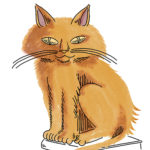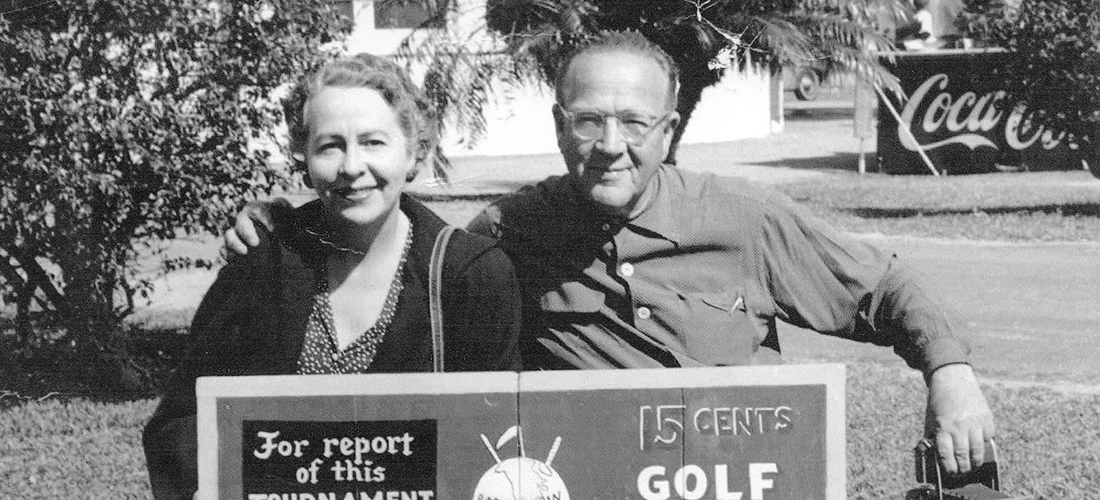
Pinehurst’s Bob Harlow, golf’s promotional genius
By Bill Case
Photographs from the Tufts Archives
When Bob Harlow learned that golf great Walter Hagen was looking to hire a full-time manager in 1921, the 32-year-old newspaperman quit his job as sports editor of the Associated Press’s Radio Division, and leaped at the opportunity to represent “The Haig.” No other professional golfer had ever hired a personal agent, but then, no other professional golfer had ever been Walter Hagen.
Not yet 30 himself, Hagen had already won the United States Open Championship twice, earning a mere $475 for his second national title. The real money, however, was in exhibitions, and Hagen was both fond of making real money and bad at keeping it once he got it. Enter Bob Harlow, glad-hander of warmth and unflinching good humor, a well-educated world-class multi-tasker who, for roughly a decade — and more, depending on your tolerance for conflicts of interest — would resolutely arrange and manage the myriad details of Hagen’s intense schedule, sometimes as many as five exhibitions a week spread across the map like paint splatters. It was a business relationship requiring nothing more formal than a Champagne toast, a money match made in heaven. Harlow would collect it and Hagen would spend it.
If Hagen knew he needed organizational triage, Harlow seemed particularly well-suited to apply the tourniquet. Herbert Warren Wind, the venerable golf writer, described Harlow as “the only man who could undress, take a shower, dress, call his wife, and write a postcard in something less than nine minutes.” A native of Massachusetts and the son of a Congregational Church minister, Harlow was a graduate of Phillips Exeter Academy and the University of Pennsylvania. Having himself worked for three different East Coast dailies, including the New York Tribune, he knew how to schmooze the local sportswriters whose fawning coverage was required if Hagen’s exhibitions were to produce a handsome gate.
Harlow’s theatrical flair matched Hagen’s own and helped him transform the star golfer into Sir Walter, a Roaring 20s commercial brand. In a 1928 exhibition match between Hagen and Archie Compston, Harlow hired a Scotland Yard detective so massive he looked like the Matterhorn with a brush mustache to stand as Hagen’s bodyguard. Furthermore, and much to the delight of the tabloid cartoonists, Harlow prevailed on the giant of a man to wear a Sherlock Holmes deerstalker hat. Harlow was widely believed to have been the ghostwriter of some of The Haig’s best lines, burnishing the image — apocryphal in degrees — of Hagen the champion carouser, partying the night away before appearing for matches the following day in a chauffeured limousine still clothed in a rumpled tux when, in truth, he was more likely to have watered the potted plants with most of his drinks.
Hagen describes their touring retinue in The Walter Hagen Story. “We had a regular caravan — three or four Cadillacs or Lincolns, my chauffeur heading the group in one, Harlow in the second, my caddie with my clothes and golf equipment in the third. I must have played, at one time or another, every golf course in this country. Guarantees didn’t mean much to me. I’d play for the gate and pray that I’d acquired the type of personality and game to draw the crowds. After the matches we’d stuff the money in a suitcase and gun the motors to the next date.” It was Harlow who was in charge of the cash, the crowd, the persona and the getaway.
Adding even more showmanship — as if that commodity was ever lacking — to many of the exhibitions was the presence of Australia’s Joe Kirkwood, the first of the great trick shot artists, who met Hagen at the 1921 North and South Open in Pinehurst. A 13-time winner of professional events, Kirkwood typically paired with Hagen in four-ball games against local hotshots. Then Kirkwood would display his fabulous array of trick shots with Sir Walter providing humorous commentary. It was a great gig. They roamed the country picking up as much as $1,000 a match at blue blood country clubs but settling for far lesser sums at nine-hole dog-patch layouts and, in the process, inspiring a generation of players to take up the game.
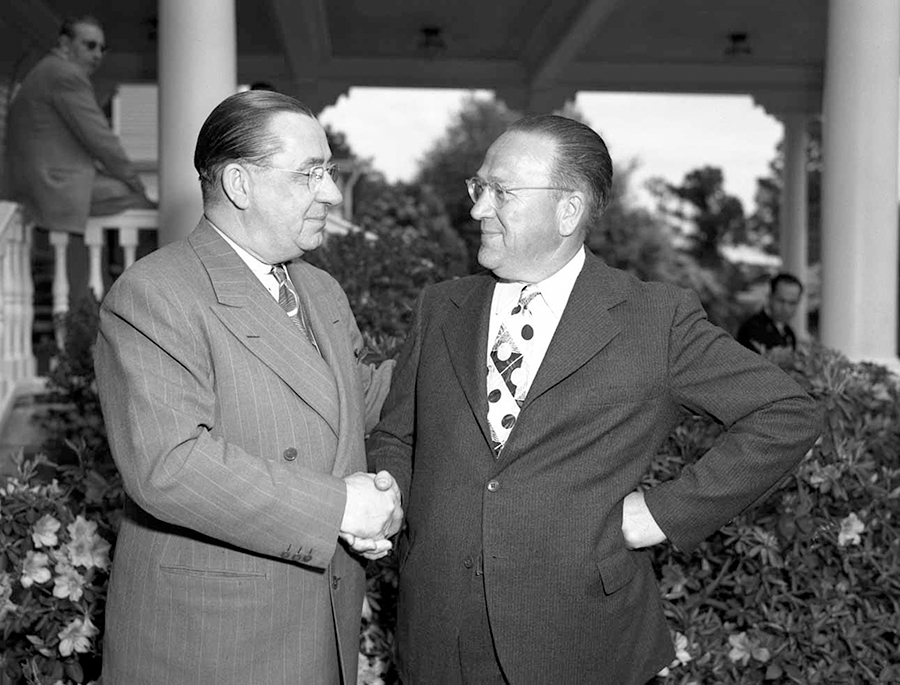
And it didn’t hurt the Hagen-Harlow fortunes that Hagen could pass for a movie star. Deeply tanned, not a single follicle of his immaculate black hair out of place, the always self-assured Hagen packed in the crowds. It was estimated he netted $45,000 annually from exhibitions. And he continued to play brilliantly in the big moments. During their association Hagen captured four Open Championships in Great Britain and five PGA Championships (four in a row from 1924 through 1927). The undisputed king of match play prevailed in 29 consecutive matches during that remarkable string. His unflappability coupled with recurring dramatic recoveries from seemingly impossible situations tended to dishearten opponents.
The only challenger to Hagen’s standing as the world’s finest golfer was the nonpareil amateur Bobby Jones. Both players spent their winters in Florida playing a lot of golf and selling a little real estate at two Gulf Coast country club developments — Jones at Whitfield Estates Country Club (now Sara Bay CC), Hagen at Pasadena Golf Club (now Pasadena Yacht & CC). “Matches of the Century” were a dime a dozen in the era of exhibitions, but if anything deserved the moniker, it would be Hagen v. Jones. In 1925, Harlow brokered the deal right down to the coin flip — a 72 hole home-and-home match to settle bragging rights and promote their respective clubs. It quickly turned into a rout with Hagen handing Jones the most lopsided defeat of his career, 12 holes up with 11 to play.
As if handling Hagen’s business wasn’t job enough, Harlow served as the guiding hand for the first National Golf Show held at New York City’s 71st Regiment Armory in May 1924. He arranged for promotional appearances by Hagen, Kirkwood, Gene Sarazen, Glenna Collett Vare and Alexa Stirling. Sixty-five exhibitors displayed equipment and clothing under one roof. A “Le Petit” (miniature golf) course was available for play, and the 8,000 patrons were wowed by a life-sized two-story clubhouse specially constructed for the exposition. Harlow also arranged for an exhibit of trophies from all of the major championships and, in a classic piece of Harlow marketing, emphasized their importance by posting an armed guard at the display.
In all matters, Harlow was shamelessly quick to leverage his association with Hagen. In February 1926, he wrote to Pinehurst titan Leonard Tufts that he and Hagen would be visiting again since Hagen planned to enter the North and South Open. After dispensing that welcome news, Harlow immediately segued into his sales pitch, writing, “ I should like very much to devote my publicity affairs and promotion work to Pinehurst from that time until after the North and South (Amateur) Championship.” He pointed out that the women’s field the previous year “was not too strong” and that he knew all the top Florida female amateurs and was sure he could get them to attend the 1927 event. Tufts replied that he hadn’t been all that impressed with the number of people Harlow had been able to produce in the past, yet still he consented to house him at the Carolina for “ten days to two weeks and $100 for expenses.”
Harlow and Tufts did the same tango the following February. With the 1927 Southern Open in Atlanta the week prior to the North and South Open, Harlow tried to sell the proposition that if Tufts retained him to represent the resort in Atlanta, “Pinehurst should obtain practically the entire Atlanta field . . . (as) it will be easy for me to persuade them to stop in Pinehurst on their way north.” Harlow naturally followed with his trump card. “I will have Walter Hagen in Pinehurst for the North and South Open as usual.”
Donald Ross opined that, while he was not opposed to retaining Harlow, the pros playing in Atlanta would likely appear in Pinehurst regardless. Club management conjured up a more difficult task for the promoter. “Why not ask him why he cannot bring Bobby Jones here for the North and South?” Harlow agreed to make the ask, but cautioned Jones would likely decline because of law school commitments at Emory University while unabashedly noting that if Jones was ever going to appear for anyone, “he would for Walter Hagen and myself as our association with him has been very friendly.” Tufts provided Harlow the same lodging and expenses afforded him in 1926.
In 1930, the PGA of America hired Harlow as its first official tournament bureau manager. The post involved the day-to-day organization of tournaments and public relations. In the throes of the Great Depression, Harlow faced the tall order of simply keeping what passed for the “tour” alive. Country clubs were closing. Sponsors reduced purses. Other events simply vanished from the calendar. Moreover, the PGA never had been able to schedule a full year’s slate of tournaments. Players still needed club pro affiliations to make ends meet. Harlow’s goal was to build a tour that would alter that paradigm. “It is entirely possible,” he claimed, “that in the future there will be sufficient tournaments and prize money — and with a schedule so changed that it will keep the better players profitably engaged for practically 12 months a year.”
There were plenty of blank spaces in the schedule and Harlow set about filling them. In 1931, the owner of the Miami Biltmore Hotel faced tax problems, and Harlow convinced him his predicament could be eased by holding a tournament on the hotel’s Donald Ross-designed course and donating the proceeds to charity. The Warm Springs Spa, where Franklin Roosevelt had undergone treatment for polio, would be the ideal beneficiary. The resulting Miami-Biltmore Open was a rousing triumph while also offering the tour’s richest purse, $10,000. The fundraising effort led to establishment of the March of Dimes.
Harlow stepped up the fledgling tour’s promotional efforts. He authored the first Tournament Players Record Book, which provided local newspapermen “a ready source of material to promote a tournament and write preview stories.” He continued writing his golf column and began publishing his own periodical, Golf News. Harlow sought to make “permanent news about golf as prominent as major league baseball.” He cajoled Hagen into speaking at fundraising dinners and exhorted local media to go the extra mile to promote tournaments because, like actors in a theater, the pros would not perform their best “playing to empty fairways.”
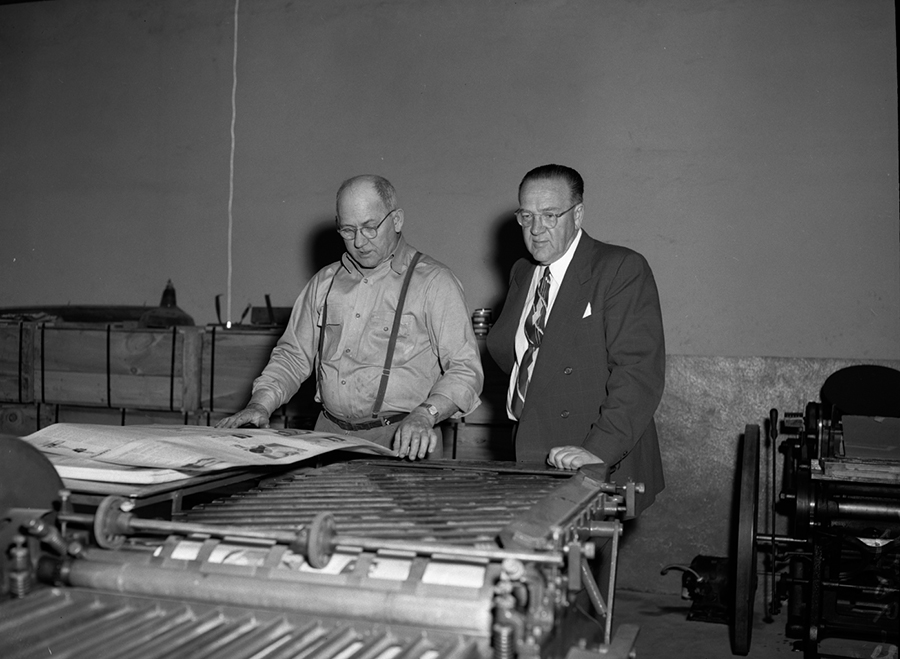
Prior to Harlow, players arranged their own starting times, teeing up when they wanted with whom they wanted. Hagen was a habitual offender, often appearing hours after he was expected. Harlow instituted mandatory tee times, prevailing on the local papers to publish them 24 hours in advance so fans would know when their favorites would be playing. Aware that there were players who failed to act with proper decorum, he issued a code of conduct, continually reminding pros that tournament golf was a form of show business, and they needed to act accordingly.
Compensation for the head of the PGA’s tournament bureau didn’t look much like the million dollar contracts and private jets enjoyed by today’s PGA Tour pooh-bahs. Moonlighting was more necessity than option. Harlow remained cozy with Hagen and managed the affairs and schedules of other players like Horton Smith, Ed Dudley and Paul Runyan. In the spring of 1932, after convincing American Fork & Hoe Company to underwrite a tour stop in New Orleans, Harlow extended his stay an extra day or two. By the time he left the Big Easy, he’d been sacked as tour manager almost certainly because of perceived conflicts of interest representing star players.
The players, led by Hagen, were outraged. They threatened to break away and form their own tour. In October of 1933, the PGA returned Harlow to his job, but by December of 1936 he was fired again. Despite his undeniable success keeping the tour alive in uncertain times, the higher-ups still seethed that he did not devote full time to the affairs of the tournament bureau.
A preternaturally optimistic person, Harlow, now 48, looked for an environment where he and wife, Lillian, a former New York opera singer, could flourish. Given his previous association with Leonard and Richard Tufts, Pinehurst seemed a logical choice. Maybe the Tuftses could be of assistance. They were. Harlow was hired as head of publicity for the resort in 1937 and held that position until World War II.
Not long after settling in Pinehurst, Harlow purchased The Pinehurst Outlook, a newspaper hitherto published weekly during the resort’s high season. Begun in 1897, the Outlook had focused on the social comings and goings of guests and members of the town’s swish cottage colony. Its offices were located in The Harvard Building (now the Old Sport & Gallery). Harlow became editor and publisher, and Lillian served as business manager.
In the November 12, 1939 edition of the Outlook, Harlow announced a new publishing schedule — every weekday during the season except Mondays, plus all Sundays. He intended to ramp up golf coverage. “The Editor . . . has long had a desire to assemble the . . . golf news of the world under one journalistic roof, and on this page, each Sunday, will endeavor to present at least a portion of the more interesting golf news which is not widely circulated by the daily press,” Harlow wrote. “It seems that a Pinehurst newspaper is a proper place for such material.”
While some national news would be reported in the Outlook, its general policy would be to avoid the “terrific controversies of the day.” As Harlow put it, “Pinehurst is a resort where visitors wish to forget for a time the problems of this disturbed world.” Still, as the winds of war blew in ’39, Harlow used golf to illustrate frightening changes taking hold in Germany. In one writing, he worriedly speculated what might be occurring at Berlin’s Wannsee Golf Club, ruefully noting that fully half the membership, including its president, Hans Zanuck, was Jewish.
Harlow attracted remarkable talent to his hometown newspaper. Charles Price, a premier golf writer of his generation, cut his teeth covering local events for the Outlook. Nationally known golf writer Herb Graffis contributed a regular column. And Harlow, a gifted essayist himself, composed numerous noteworthy pieces. He was proudest of crafting a series of articles commemorating the Pinehurst resort’s 50th anniversary in 1945. Laboring until 3 a.m. for three successive nights and authoring 24 pages of copy four days in a row, his work still ranks as an indispensable account of Pinehurst’s first half-century.
Believing the scope of the paper’s golf coverage would befit a national publication, Harlow hatched a weekly magazine ambitiously titled Golf World on June 18, 1947. While other golf periodicals existed, Harlow’s new publication raised the bar for scholarly writing about the game. Working in tandem with associate editor Tom O’Neil and with Lillian in charge of circulation and advertising, the magazine garnered 5,000 subscribers the first year of operation. Harlow re-emerged as a player on the national golf stage.
The offices of the Outlook and Golf World moved to the Pinehurst warehouse building, the white structure still located across the road from the 18th tee of PCC course No. 3. The burden of managing two publications proved too great, even for the energetic Harlow. On August 3, 1950, he announced the sale of The Pinehurst Outlook to the Wilson family. (It would cease regular publication in 1961.) With the Harlows able to concentrate their efforts on Golf World, circulation continued to grow, rising to 9,000 in its first five years. The same year he sold the Outlook, Harlow hired 14-year-old Tony McKenzie to do odd jobs, eventually including lithography and typesetting. McKenzie remembers many of golf’s great names breezing in to pay their respects to the publisher in his second floor office. Harlow’s ready supply of Wild Turkey and Seagram’s Seven Crown provided refreshment for the likes of Jimmy Demaret, Lloyd Mangrum, and Hagen himself. Tony remembers Sam Snead coming by too, although the Slammer was known to be abstemious.
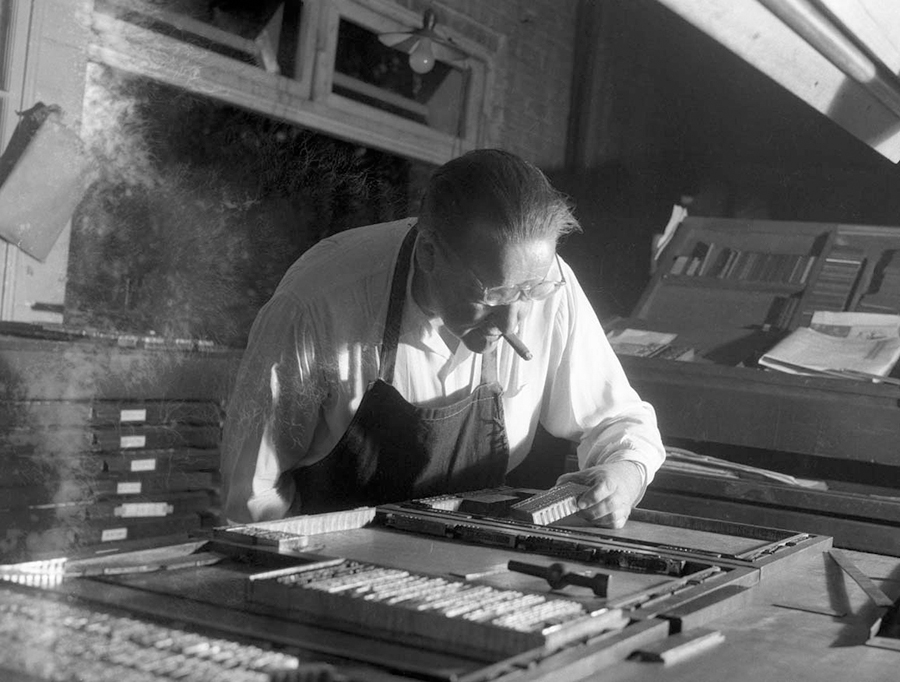
On November 15, 1954, Harlow died suddenly at age 65, a victim of coronary thrombosis. By then his little magazine had subscribers in “every state of our country, every province in Canada and sixty foreign countries,” wrote Herb Wind. “Golf World was successful because it had the chatty, everybody-here-knows-everybody-else flavor of a home town newspaper. It had that flavor because Bob Harlow was a hopelessly friendly and companionable man.” The Outlook reported that his untimely death, “cast a pall of gloom over the entire village.” His friend and benefactor Richard Tufts remarked, “The world of golf has lost its best friend . . . I always came away from any contact with him stimulated mentally by his opinions and refreshed by the honesty of his purpose.” Harlow’s successor at the PGA Tournament Bureau, Fred Corcoran, wrote: “He opened the door to riches for American professional golfers. Yet he never forgot that golf is a game.”
A mourning Lillian Harlow announced that Golf World would continue and “. . . will be better than ever. It must be so as a monument to Bob.” And the magazine did continue under the editorship of Dick Taylor without missing a beat. Lillian moved the offices from the warehouse building to Southern Pines, and continued her ownership until 1972. After two interim owners, the New York Times Company bought Golf World in 1989 and relocated the magazine to Connecticut, joining another NYT property, Golf Digest. In 2001, it sold both magazines to Condé Nast. Golf World’s paper publication was terminated following the 2014 Open Championship. At the time, it was the game’s longest running publication. The title survives on Golf Digest’s website.
The list of the magazine’s contributors is long and venerable. It served as a platform for the likes of Ben Wright, Bob Drum, Al Barkow, Lorne Rubenstein, Bob Verdi, Dave Anderson, John Feinstein, Curt Sampson, Geoff Shackelford, Steve Eubanks, Nick Seitz, Moore County resident Jaime Diaz and PineStraw’s Jim Moriarty and Bill Fields, to name just a few.
In 1988, Harlow was inducted into the World Golf Hall of Fame. The only others enshrined for writing about and/or publicizing the game are Corcoran, Wind, Graffis and, most recently, Dan Jenkins. He joined Donald Ross and Richard Tufts as the only Pinehurst residents in the Hall.
Of the notable golf people who have called Pinehurst home, Bob Harlow’s name is rarely mentioned. Among visitors to the modern golf Hall of Fame near St. Augustine, he would rank right at the top of the “Who’s that?” list. But, a trailblazer’s footprints can have a light touch. PS
Pinehurst resident Bill Case is PineStraw’s history man. He can be reached at Bill.Case@thompsonhine.com.


